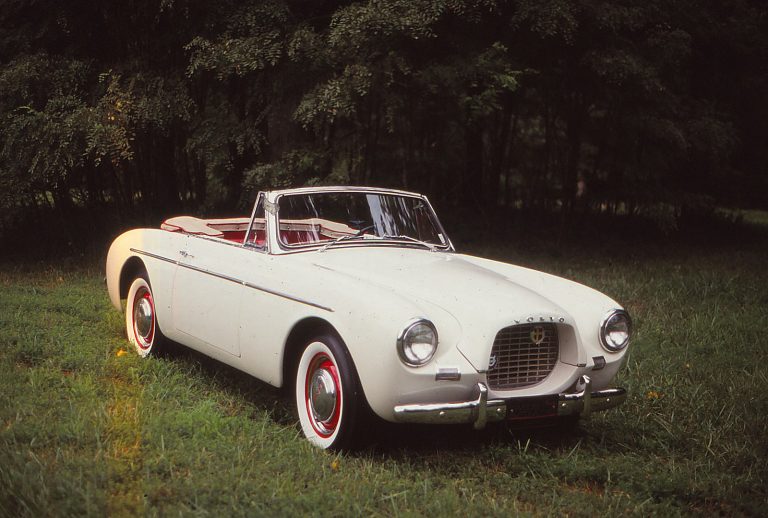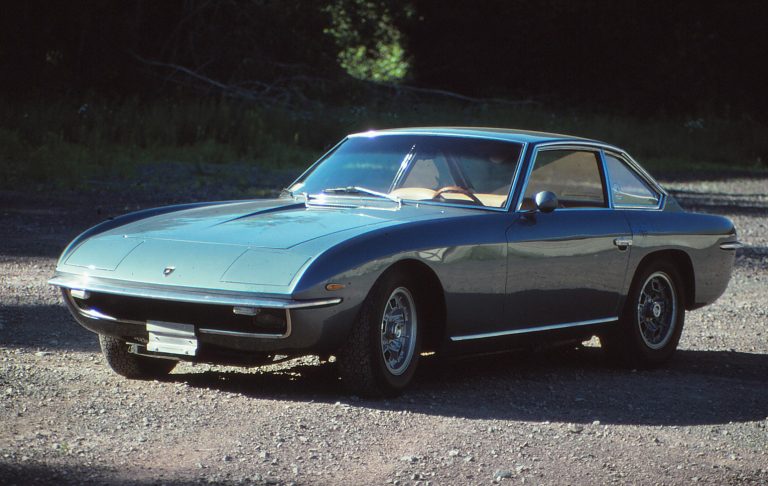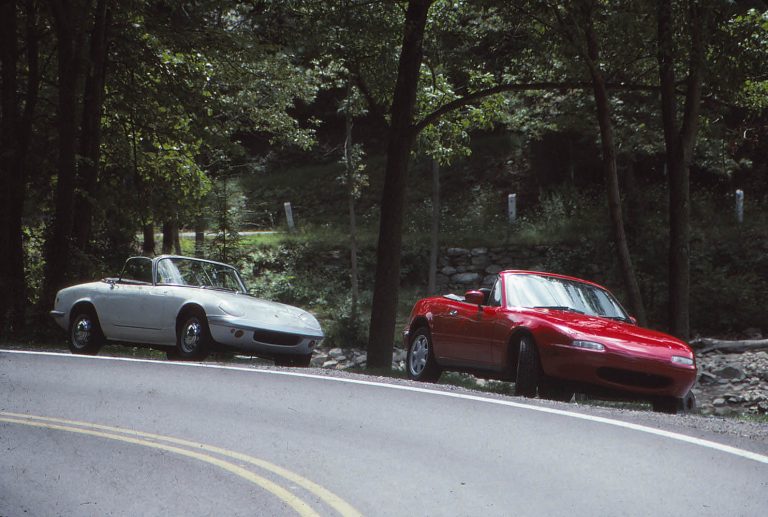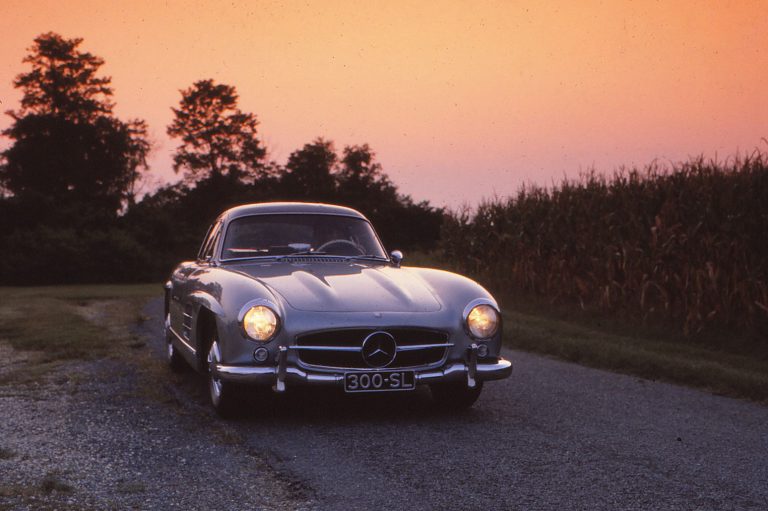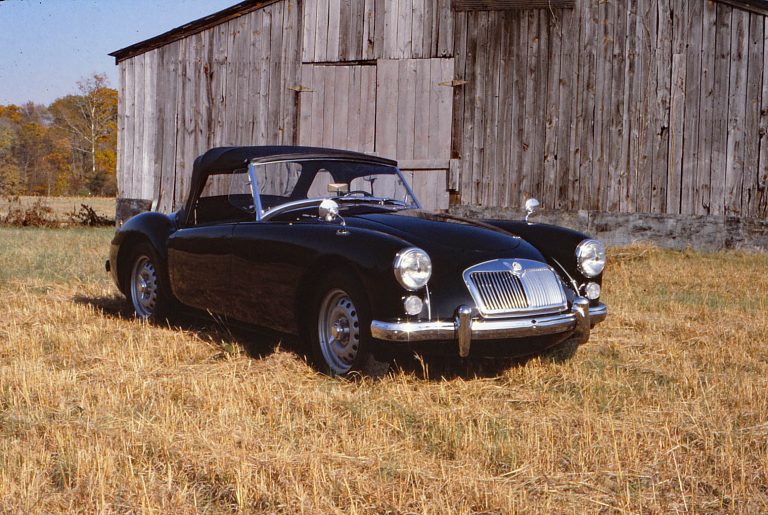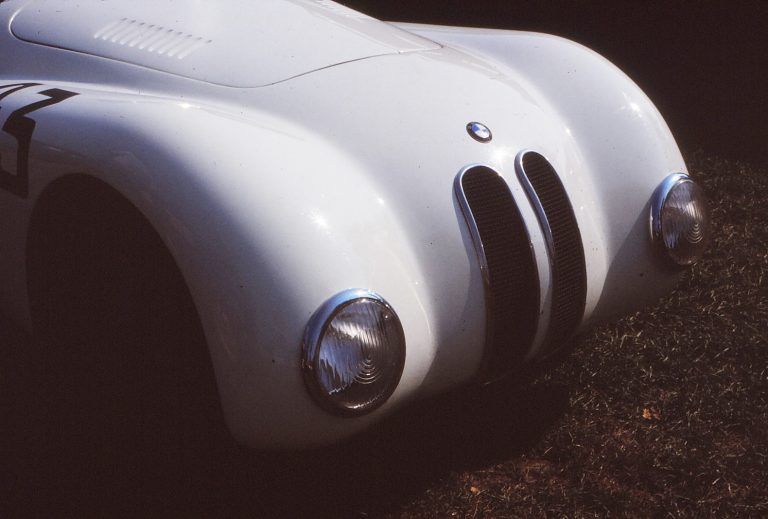History/driving impressions republished by the author; originally published in AutoWeek March 20, 1995
It helps to imagine a British movie of the early ‘50s, one in which an R.A.F. pilot retells the story of the Battle of Britain, smoking a lot of cigarettes while driving – really sitting in a car mockup with a highway seen projected behind – with stiff-upper-lip narrative interspersed with authentic (patriotic, available and probably cheap) air combat footage. The car he drives, of course, is a Bristol 404.
What could be more appropriate? In 1939, the Bristol Aeroplane Co. was said to be the largest builder of airplanes and aero-engines in the world. Bristol’s Blenheim fighter-bomber and Beaufighter saw varied service in World War II. Bristol produce some 104,000 aero-engines and more than 14,500 aircraft during that war.
As peace approached, Bristol’s large wartime workforce needed new tasks. Bristol tried building its own automobile. That initial attempt at a wholly original design failed, but at war’s end Bristol obtained manufacturing rights to the BMW Type 326, 327 and 328.
The first production Bristol, the Type 400 saloon (British for sedan), was unveiled at the 1947 Geneva Motor Show and was largely a prewar BMW, even to the German company’s twin-kidney grill. (When BMW, at the 1951 Frankfurt show, reentered car manufacturing, it skipped directly to the 500 series, naming his first postwar model the 501). Bristol also adopted virtually unaltered the BMW 2.0-liter, in-line six-cylinder engine with this unique cylinder head.
First used on the BMW 328 in 1936, the aluminum head converted a conventional I-head engine to a hemispherical combustion chamber with opposed valves. The intake valves were conventionally actuated by the camshaft, pushrods and rocker arms, but the exhausts had another short pushrod that crossed the head to another rocker that open the valve. Because the forest of pushrods blocked access to the intake side, the intake port was routed directly from above and downdraft carburetors were used. It was efficient, effective and responsible for BMWs prewar competition successes, but nonetheless made for a tall engine.
The engine also powered the Bristol 401, which in 1949 succeeded the 400 and lasted until mid-1953, when it was replaced by the 403, another saloon. A 402 convertible had a short run. To this point, all Bristols used the BMW-derived six, the twin-kidney grill and a wheelbase of 108 inches.
However, a wholly different kind of Bristol appeared in late ‘53. Still powered by the tall six, the new 404 was described as a “two-door, two-seater saloon, with a very small seat in the tail.” Not only was it smaller inside, it had a 96-inch wheelbase. What’s more, the BMW-derivative grille was replaced. The all-new, all-aluminum shape, fashioned with the help of Bristol’s own wind tunnel, had a “carefully designed radiator inlet duct combining maximum efficiency with low frontal area.” It was, in fact, derived from Bristol aircraft design. A small hood scoop was more for carburetor clearance than to admit air.
The 404’s flanks were smooth, though creased behind the front wheel openings for access panels to the battery on the right and the spare wheel on the left. A fastback roof with a large rear window dropped between rear fenders with rudimentary fins, perhaps the only purely nonfunctional part of the design, though it added an element of crispness and after all, what’s an airplane without tail fins?
That “very small seat” in the rear was that indeed, a temporary roost only, and not for touring. The seatback folded for added luggage room, though only one 404 had a rear hatch. It was offered only on request and at a considerable extra expense.
The front seats are comfortable and the driver has a commanding view over the rounded contours of the hood and fenders. The floor is high relative to external appearances, the chassis of sheet-metal construction 6.5 inches deep. It’s fairly tall for a coupe (almost 56 inches) so headroom is not severely limited. A pod houses all instruments, black-on-white tach, speedometer, oil pressure, oil temperature, water temperature, petrol and ammeter. Everything, it seems, but an altimeter.
Buyers could choose the engine: either the Bristol 100B, producing 105 hp at 5000 rpm, or the 100C, which made 20 more horsepower 500 rpm higher. Most 404’s came with the less powerful engine, perhaps because it was cheaper, but maybe because Bristol advised that the 100C required frequent gear changes. Ironically, the 404 came with a short “remote shift lever,” which is a delight to use and which replaced the whippy porridge stirrer of the earlier Bristols. Despite the name, the new shifter’s base was close to the driver; it was remote relative to the transmission.
With one exception, the 404s were coupes; the single drophead was a conversion by Abbott of Farnham. Virtually all 404’s were right-hand-drive. One that was not, number 404/2051, was built for Thomas Neelands, who helped design the Vickers Viscount aircraft. While living in the United States, Neelands specified left-hand-drive and the 100B engine on a car intended for his wife.
Mark Greenwald bought the car in 1971 (via The Vintage Car Store in Nyack, New York), and later traded it for a Ferrari at Smalley’s Garage in Watkins Glen. About two years later, it was sold to Ted Rehner, who drove it less than 500 miles before selling it in 1992 to Mike DiCola whose Valley Vintage Cars in Hadley, Massachusetts, specializes in Bristol engines. The car has not been restored and, considering its original condition, DiCola has no such plans.
Road & Track called the Bristol 404 “an exceptionally well conceived English design.” Unfortunately, it was a commercial disaster. It was expensive to build and sold for £3542 in England (about $5800 U.S.). Like the R-Type Bentley Continental, it was a young man’s car at an older man’s price. Only 51 were built. However, its legacy was the Arnolt-Bristol. Almost 3 times as many 404 chassis were converted into that Anglo-Italo-American hybrid than became English coupes. Another enduring aspect was the radiator scoop introduced on the 404, which became a Bristol signature.
Meanwhile, our movie pilot, having won the war, wins the girl, and in the last scene we see them bombing down the road in the Bristol 404. At least the car was an artistic, if not a financial, success.
At the same time as the 404, Bristol was also building the 405. But while the Bristol 404 was built from 1953 to 1958, the Bristol 405 didn’t debut until 1955, going out of production at the same time as the 404. The Bristol 405 differed from the 404 by having a longer wheelbase, 114 inches versus 96 inches. The extra 18 inches went to having room for a four-seat four-door saloon (sedan) and four-place drophead coupe (convertible) versions. While the drophead carried off the extra length moderately well, the 405 looked like what it was, a stretched coupe. Think Jaguar XK-E 2+2, an ungainly take on of the world’s most beautiful cars.
The peculiar aspect of the 405 was the rear doors being longer than the front, making access to the back seat easier than the front. It’s an unusual statement of priorities.
The Bristol nee-BMW six-cylinder also found a home, in addition to the Arnolt-Bristol, in the AC Ace roadster and AC Aceca coupe, highly superior if more expensive alternative to the AC six. Read my history and impressions of the AC Aceca Bristol here.
Another group of aeronautical engineers setting out to design an automobile were those at Svenska Aeroplan Aktiebolaget, or as you know it, SAAB. Their first model on the market, the Saab 92, looked an airplane without wings.
How much is the Bristol 404 worth? Classic.com lists one 404/405 sold in the past five years, that one going for $207,114.




